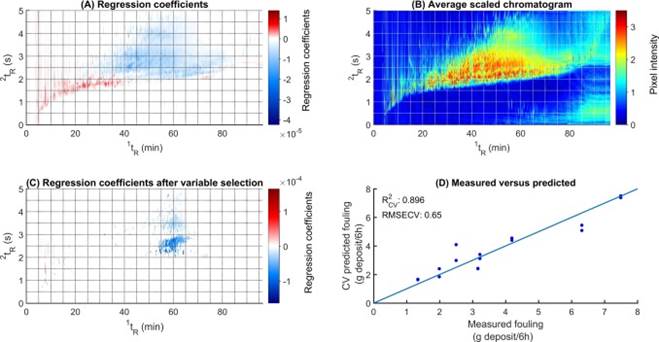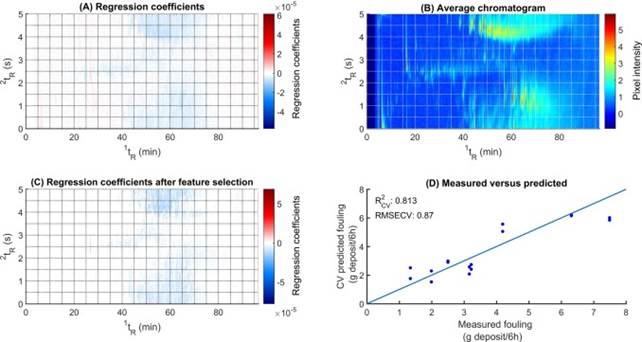(159d) Pixel-Based Approach in Combination with GC × GC for Fouling Tendency Prediction in Steam Crackers
AIChE Spring Meeting and Global Congress on Process Safety
2020
2020 Virtual Spring Meeting and 16th GCPS
The 32nd Ethylene Producers Conference
Ethylene Plant Feedstock Contaminants II
Friday, August 21, 2020 - 1:30pm to 1:50pm
Pixel-based approach in combination with GC × GC for
fouling tendency prediction in steam crackers
Marko R. Djokic1,*, Victor Abrahamsson2, Nenad
Ristic1, Kevin Van Geem1
1
Ghent University, Laboratory for Chemical Technology, Technologiepark 914, 9052
Gent, Belgium.
2 Jet Propulsion
Laboratory, California Institute of Technology, Pasadena, CA 91109, USA
Abstract
Fouling tendencies of a series of
gas condensates were evaluated using comprehensive two-dimensional gas
chromatography with flame ionization detection and sulfur chemiluminescence
detection. A pixel-based approach was applied in order to identify parts of the
chromatograms which were associated with the reactor coil fouling. Particular
emphasis is given in this work to evaluate several feature selection
methodologies along with various data preprocessing procedures. It was found
that both aspects were crucial for studying the fouling tendencies and, as part
of the subsequent partial least squares model development, predominantly the feature
selection. Based on the flame ionization detector chromatograms and using the
RReliefF algorithm for feature selection, a partial least squares regression
model with one latent variable resulted in a root mean square error of the
cross-validation of 0.65 g deposit/6 h (17%) (see Fig 1.). Based on the sulfur
chemiluminescence detector chromatograms, the F-statistics feature selection
generated a slightly better partial least squares regression model compared to
using RReliefF, thus generating a model using one latent variable with a root
mean square error of the cross-validation of 0.81 g deposit/6 h (21%) (see Fig.
2). Heavy aromatic compounds and heavy sulfur containing compounds were
negatively associated with the fouling rate. Both were crucial in developing a
partial least squares model with good prediction power, however, worked
independently as predictors.
Fig 1: PLSR model based on the
scaled FID chromatograms. (A) Presents the regression coefficients prior to
feature selection, while Figure C presents the regression coefficients after
using RReliefF as feature selection and selecting the optimum cut-off value.
(B) Shows an average GC × GC-FID chromatogram based on the arithmetic mean of
the scaled and base 10 logarithm transformed chromatograms. The measured versus
the cross-validated prediction of the final PLSR model is displayed in (D).
Fig. 2: PLSR model based on the
SCD chromatograms. (A) Presents the regression coefficients prior to feature
selection, while (C) presents the regression coefficients after using
F-statistics as feature selection and selecting the optimum cut-off value. (B)
Shows an average GC × GC-FID chromatogram based on the arithmetic mean of the
base 10 logarithm transformed chromatograms. The measured versus the cross-validated
prediction of the final PLSR model is displayed in (D).


